#john mcentire
Audio
Plea Rel by Canon Blue from the album Lasso Yo
#music#canon blue#daniel james#heba kadry#temporary residence limited#temporary residence ltd.#john mcentire#temporary residence ltd#artwork#cori corinne#temporary residence
22 notes
·
View notes
Text
Sam Prekop and John McEntire — Sons Of (Thrill Jockey)

Photo by Mike Boyd
Sons Of by Sam Prekop and John McEntire
On Sam Prekop’s last solo album, 2020’s Comma, the Sea and Cake front man combined his enthusiasm for modular synth explorations with a strident melodic sensibility (in my Dusted review I praised the album’s “balance of cosmic spaciousness and rhythmic crunch”). On Sons Of he’s joined by his Sea and Cake bandmate John McEntire, who’s also a long-standing member of Tortoise, a talented drummer, and a prominent producer who’s worked with bands such as Stereolab and Jaga Jazzist. What began as an impromptu live collaboration between Prekop and McEntire became a more immersive project, involving editing live improvisations then adding overdubs.
Sons Of comprises four tracks totally nearly an hour of music. It’s consistently surprising how well Prekop and McEntire strike a balance between riding a groove and nudging their parts into gradual evolution. This is the kind of music where you rarely notice how much it’s transforming during its runtime until you think back to how a track began. “A Yellow Robe,” in particular, evolves in an almost covert way across its 23 minutes. The squiggly synth textures initially seem like a permanent part of the song’s fabric, only to gradually fade out of the picture to make way for contrasting parts. Closing track “Ascending By Night” is especially affecting, its dystopian synth pads soaring across the album’s dependable bed of intricate beat work and colorful melodic patterns.
There’s a definite sense of exploration throughout the record, counterbalanced by a dependence on reliably satisfying synth and drum machine sounds. Though opening track “A Ghost At Noon,” which comes from one of the duo’s first run of live performances in 2019, runs to a comparatively succinct eight minutes, there’s a clear basis for ongoing collaboration, beyond the bounds of Prekop and McEntire’s other projects. Such clear chemistry and inspired interplay will hopefully lead to future releases in the same vein. Anyone with a penchant for classic-sounding ambient electronica with a kosmische bent will find plenty to nod along to here.
Tim Clarke
#sam prekop#john mcentire#sons of#thrill jockey#tim clarke#albumreview#dusted magazine#sea and cake#tortoise#improvisation#electronics#kosmiche
11 notes
·
View notes
Text

#Snoopy#Tortoise#TNT#post rock#math rock#jazz#thrill jockey#Jeff Parker#John McEntire#Peanuts#Charlie Brown#the sea and cake#sea and cake
3 notes
·
View notes
Text
Favorite Albums of July 2022
5. Jazz Codes- Moor Mother
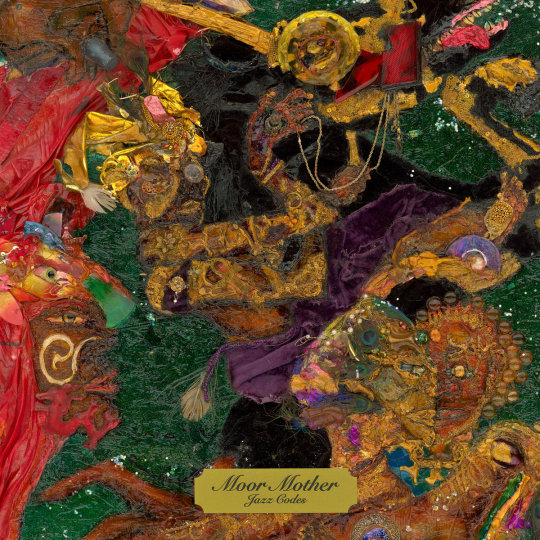
Essentials: “Rap Jasm” ft. Akai Solo & Justmadnice, “Dust Together” ft. Wolf Weston & Aquiles Navarro, “Thomas Stanley Jazzcodes Outro” ft. Irreversible Entanglements & Thomas Stanley
4. Hellfire- black midi

Essentials: “Sugar/Tzu”, “Welcome to Hell”, “Dangerous Liaisons”
3. God’s Country- Chat Pile
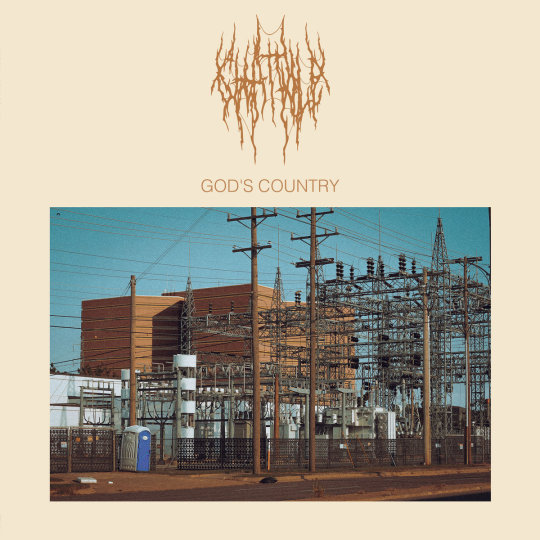
Essentials: “grimace_smoking_weed.jpeg”, “Why”, “Anywhere”
2. Sons Of- Sam Prekop & John McEntire

Essentials: “A Yellow Robe”, “Crossing At the Shallow”
1. Renaissance- Beyoncé

Essentials: “Break My Soul”, “All Up in Your Mind”, “Virgo’s Groove”
4 notes
·
View notes
Audio
Tortoise – TNT (1998)
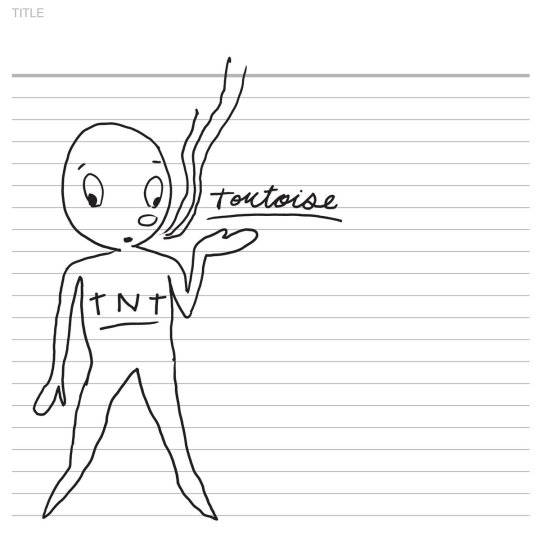
http://www.trts.com / https://thrilljockey.com
#tortoise#tnt#thrill jockey#post rock#rock#indie rock#douglas mccombs#john herndon#dan bitney#john mcentire#david pajo#jeff parker#rob mazurek#roger seibel#sara p. smith#julie liu#usa#popahna brandes#1998#1990s
5 notes
·
View notes
Text
The Sea and Cake - Any Day

4 notes
·
View notes
Photo

• sam prekop + john mcentire
• sons of
• bit.ly/sPjM-sSo
2 notes
·
View notes
Text
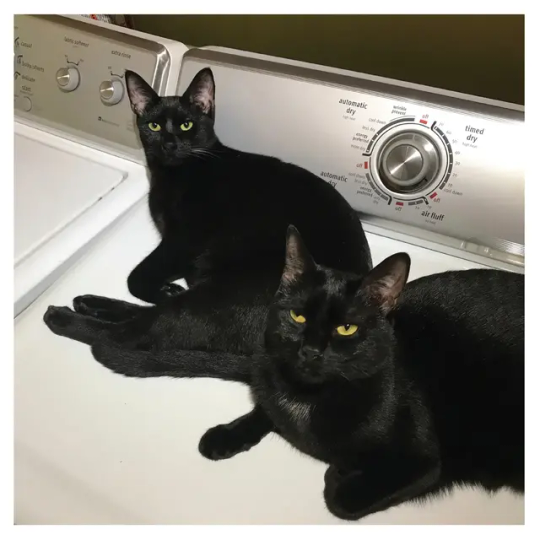
Sons Of [2022] - Sam Prekop / John McEntire
1 note
·
View note
Text
youtube
Bastro - I Come From A Long Line Of Shipbuilders
#bastro#i come from a long line of shipbuilders#david grubbs#clark johnson#john mcentire#post hardcore#noise rock#sing the troubled beast#1990#Youtube
0 notes
Text

Sam Prekop and John McEntire - Sons of
0 notes
Text
I've added a third item to this archive of older musical activities. Joining Fish & Roses' Dear John and V-Effect's Stop Those Songs is Bell System, the 3rd album by Les Batteries, the (mostly) drum duo of me and the great Guigou Chenevier.
#brownout's past#brownout's passed#Guigou Chenevier#bandcamp#rick brown#les batteries#john mcentire#doug mccombs#Bell System
1 note
·
View note
Photo
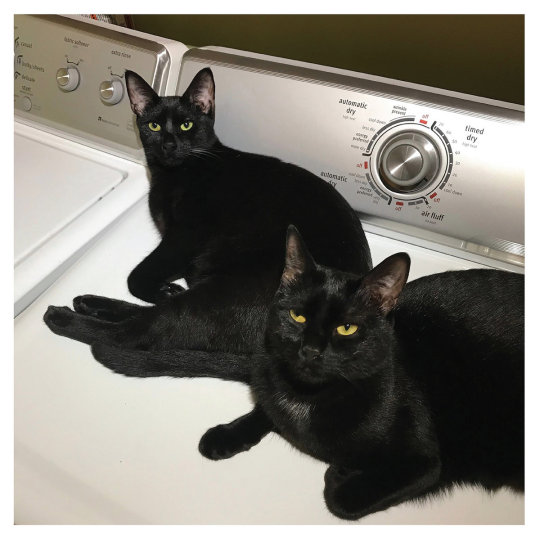
https://samprekop.bandcamp.com/album/sons-of
1 note
·
View note
Text
Jeremiah Chiu & Marta Sofia Honer Interview: Press Record

BY JORDAN MAINZER
These days, Jeremiah Chiu and Marta Sofia Honer make topographical music.
The modular synthesizer artist and violist first met in Chicago, playing a performance of Terry Riley’s In C at the venue Constellation, with an ensemble put together by ambient trio Bitchin Bajas. Up until that point, Chiu primarily worked as a graphic designer, Honer as an instructor and part of a quartet. But their first collaboration proved rewarding enough for the two to continue. They moved to Los Angeles in 2014 and became more heavily involved in their various studies: Chiu as a visual artist, sound designer, and community organizer, Honer as a prominent session musician. And both as teachers.
It wasn’t until 2017 that their most fruitful musical collaboration was born. Chiu and Honer traveled to the Åland Islands, an archipelago in the Baltic Sea, to help mother/daughter duo Jannika/Sage Reed barn raise an inn named Hotel Svala in Kumlinge. They hoped to generate a space for residencies, fostering a creative community like they’d done in the cities they’d lived in. Throughout their nonstop days of labor--nonstop because during the summer, the sun never set--they found themselves recording various natural and manmade aspects of the island, for no reason other than to document surroundings that they may not ever get to go back to. But fast-forward to 2019, and Chiu and Honer did return: They were awarded a grant to return to the Åland Islands to perform a concert at a 14th century medieval church called Kumlinge Kyrka. They recorded the concert and, with a wealth of source material from both trips, decided to collage their recordings together, along with other improvisations on various instruments, to create Recordings from the Åland Islands, released on International Anthem in March.
Independent of its context, the album is a pleasure to listen to, one that allows you to create your own associations with the sounds. Warbling synth harmonics, birdsong, and crunchy noises like a train in the rain pervade opener “In Åland Air” (which features processing from Tortoise’s John McEntire). “On the Other Sea” is reminiscent of Boards of Canada’s penchant for finding eerie atonality in otherwise beatific timbres, with its wind chimes, synths, and horns. “Rocky Passage” creaks along, full of noises like hearing a woodpecker on a hike, unable to spot the bird cascading up and down its tree. The synth arpeggios on “By Foot By Sea” sound, of course, like the up-and-down current of waves. But I find the album even more rewarding when you do know the stories behind the songs, the way the instruments try to emulate nature. Honer’s viola leads my favorite, “Snåcko”, a track named for the island next to Kumlinge, as keys circle in the background, purportedly inspired by the feeling of your eyes slowly adjusting to multi-colored moss in the forest of the island.
Tonight, in an In The Round performance, Chiu and Honer bring the Åland Islands to Thalia Hall as part of a triple (!) International Anthem release show. Along with Daniel Villareal (celebrating Panamá 77) and Anteloper, the duo of Jaimie Branch and Jason Nazary (celebrating Pink Dolphins), Chiu and Honer will start with the base sounds of the tracks from their new album and improvise from there depending on the crowd. In advance of their performance, I spoke with Chiu and Honer over Zoom about their approach in making an album about a place very few people have been, improvising in response to nature, and being a part of International Anthem. Read our conversation below, edited for length and clarity.
Since I Left You: This album has very personal associations for both of you, both in terms of the source material and its inspirations. When making it, did you at all think about the experience of a listener who hasn’t been to these islands and what they might associate certain sounds with?
Jeremiah Chiu: That’s a great question. When you’re making a record, there’s always a balance, to the point of losing one’s self in it where you question what the purpose of making it is. Is it to capture our own experience? How might that resonate with the listener? I feel a lot of what we did in the process of the music after it had been captured is put ourselves in a position of both artist and listener. We were listening to so much of what we captured there and wanted to make sure we maintained the spirit and literally the sound and essence of those recordings. A lot of it wasn’t captured with the intention of [making a record.] We were traveling and sightseeing and experimenting and just so happened to press record. A lot of that material ended up being used as-is but collaged together. The experience of the listener is something we also paid a lot of attention to. We were trying to do as little manipulation as possible. We weren’t rerecording and overdubbing. We were looking at various things that happened and trying to find a way to bring them forward.
SILY: At the same time, at the end of “Stureby House Piano”, Jeremiah, you say, “Send me that, we’ll just use it.” Do you recall other moments like that where you recorded something and immediately knew it was gonna be on the record?
Marta Sofia Honer: Well, we didn’t immediately know there was going to be a record that first trip or even fully that second trip. It was more in that moment where you hear Jeremiah talking about the Stureby, it was a really special moment and maybe we could use it for something.
JC: A lot of it started to form as we were going more and more around and started to realize a lot of stuff was being collected. So there was a little bit of an idea along the way. We’d recorded enough random material on the trip that we might form it into something later. That recording, I didn’t even know that was being taken, and when I heard it back, I thought, “There’s something really nice that could be used, whether part of a record or its own thing.”
SILY: The songs capture a lot of different aspects of the islands, both naturally and in terms of the mood. How do you go about consciously trying to make sounds peaceful, disorienting, or in between? Does that process more naturally unfold?
MSH: There were a lot of moments where it naturally unfolded because we tried to preserve a lot of those moments of improvisation where we did sit down to play, or those moments of exploring and capturing. The first trip we took during midsummer, the sun never really sets, and the days are suspended eternally. With jet lag, it can be a really surreal, trippy time, so those initial improv moments had a lot of that in it. It projected itself onto the songs.
JC: In recording this stuff, a lot of it comes from improvisations, but a lot of what you hear in the improvisations is us responding to the place. In that process, as an example, we make mention in the liner notes that this record may not be the kind of record we ever make again. What we mean by that is that the pace of the record is slow because the place is slow. We were really responding to that sense of place and our experience of time there where it would feel really strange to do something fast. That’s just not the nature of that place. It does have this in-betweenness that’s very gentle and serene but with an underlying unknown. It doesn’t always resolve. We were really responding to that when we were capturing and playing and sitting in a place having decided to pick up an instrument and press record.
SILY: It reminds me of some other records I’ve heard that collage field recording and instrumentation, where the synthesizer and the viola start to emulate aspects of the natural world to the point the listener’s questioning the difference between “music” and “recording”. Did you experience that question a lot on these islands?
JC: Absolutely. Some of our other favorite records do similar things, so there was a referential precedent we were paying attention to. Some of my favorite recordings are ones where you don’t exactly know what’s going on. Some of it feels straightforward, some of it feels organic, but there are moments where the manipulation of sound and the fidelity of the sound shifts quite a lot. On our recordings, you hear voice memos and field recordings, and there’s a way to edit or combine all of those fidelities into one thing that feels cohesive, even though it might not be the cleanest recording possible.
SILY: Marta, on a track like “On The Other Sea”, your viola has almost horn-like qualities. If I had gone into it, without context, I would have thought it was a horn. On “Archipelago”, your viola goes hand in hand with the flute. How do you get your instrument to take on so many tones?
MSH: I think there is horn on [“On The Other Sea”].
JC: Often times, you’re playing [multiple instruments]. You should talk about how you granular synthesize and MIDI your lines.
MSH: Okay, sure. I don’t think it happens on [“On The Other Sea”], though. But in terms of tone, you brought up a great point of two very different ways, where on “On The Other Sea”, I’m going for a more melodic, bell-like, or brassy tone you could imagine projecting over the ocean. We have those field recordings of the water on that track. “Archipelago”, I was doing more layering with variation and texture, so that’s created where I’m moving the contact point of my bow. If I’m moving it closer to my bridge, that’s going to start to [become] higher based on whatever tone or pitch I’m playing. If I move closer to the fingerboard, that’s more of an airy texture. I was trying to create more topographical sound. As Jeremiah mentioned, there are tracks where we took the existing melodies I recorded and we took granular synthesis to chop up the phrase and get some different melody lines coming out, which is what I also did with the flutes on “Archipelago”. On “Snåcko”, we took my melody line and converted it to MIDI.
JC: We had it triggered.
MSH: Those are moments where you hear the viola tone, and it blends into a more synthesizer tone.
SILY: “Archipelago” was recorded in an empty pool. Did you come across the pool and immediately think, “I have to make something in here?”
MSH: There’s a pool house in the back of Hotel Svala where we were staying with our friends and helping work. Jeremiah spent a lot of time in that pool house initially because there was a sauna. I think I spent an entire day staining the new sauna. We were doing some manual labor outside the perfect empty pool. Once we finished our tasks--and the day is expansive--we decided to go at the bottom of the pool and see what that sounded like.
SILY: Does “Kumlinge Kyrka”, named after the venue in which it was recorded, have most of the concert material?
JC: I think that piece is a direct pull from the concert, while more of the other pieces pull bits.

SILY: How are you performing this material live?
JC: [laughs] Great question.
MSH: Well, we have been. When the record was coming out, we had to think about how we were gonna pull it off. The performance is presenting some of the material and sounds and melodic lines people are familiar with from the record, but also improvising and expanding off of those ideas. Our setup is me on viola and percussive instruments like the chimes and bells you hear opening a lot of the tracks. I also have a little sampler I’m using to trigger the field recordings and lines I’ve prepared that I can’t do acoustically.
JC: I just have my synthesizer rig. It’s not too different from what we brought [to the Åland Islands] to do a performance. Similar instrumentation, but the nature of this record is so collaged and ephemeral and has its own distinct sound. We’re not attempting to recreate it exactly by any means, more [use it] as jumping off points. We might start at the motifs or melodic structure of the sound, but then we take it where we feel like going depending on the audience, the venue, the night. We’ve done a couple performances, and some become more melodic and serene, and sometimes we push it, and it becomes more rhythmic and percussive. It’s been allowing us to tread new territory in how we play together, in hopes that might form the beginnings of a new record in the future.
SILY: Does playing a venue the size of Thalia Hall change your approach?
MSH: I don’t think so. We always let the vibe of the crowd affect our improvisational approach. If the crowd is more active and excited, we’ll push it and have there be a bit more energy and percussion. If it’s something where everyone seems to be a little more mellow and seems to be listening attentively, we might keep it on the gentler side.
SILY: What does being part of the International Anthem community mean to you?
JC: Oh man, they’re the best. [laughs] So much of it is their approach. A lot of the way we were connected through is that Marta was starting to collaborate with [their artists], like on Daniel’s record. As we were starting to form this one, [label co-founder] Scottie [McNiece] had heard parts of it and expressed some interest. We were so fortunate to have his support and guidance of the whole team, [recording engineer and warehouse manager] Dave Vettraino, [co-founder and recording engineer] David Allen, [marketing, communications, & events person] Alejandro Ayala. It’s interesting for us because that label, on the outside, wasn’t a self-described jazz label, but of course they’re putting out so much amazing material in that realm. For us, it’s a Chicago label, tethered to a community out of that city. We’ve spent a lot of time working in that city and felt that connection working with so many artists on the roster.
SILY: What’s next for the two of you?
MSH: We’re definitely starting to explore some sounds and territory that could be interesting in terms of writing more material for us. Jeremiah is finishing up a solo record as well.
JC: There are many different projects in various states needing to get finalized. Marta’s a session musician and performer always in the studio working on other people’s projects. There’s an ongoing flood of music we’re working on. We’re hoping to expand on the momentum and incredibly positive feedback we’ve received on this record. We’re just so fortunate to have the opportunity to do anything like this.
SILY: Anything you’ve been listening to, watching, or reading you’ve been into?
JC: Celia Hollander’s record last summer was incredible. We’ve been collaborating a lot with each other. Same with Sam Prekop, Patrick Shiroishi, Dustin Wong, Ben Babbitt, Walt McClements last records. A couple of those last records that came out on American Dreams are so beautiful and wonderful. We had the great fortune of playing a couple shows with Alabaster [dePlume], and seeing how that live stuff comes together is mind-blowing and incredible, how different it can be every time, but also how powerful it can be. Lea Bertucci has some great releases too. And you have to listen to the new Daniel [Villareal] record on International Anthem. Irreversible Entanglements, that record’s incredible, too.
youtube
#interviews#live picks#jeremiah chiu & marta sofia honer#marta sofia honer#hotel svala#international anthem#john mcentire#thalia hall#daniel villarreal#anteloper#jason nazary#scottie mcniece#david allen#alejandro ayala#celia hollander#patrick shiroishi#dustin wong#ben babbitt#walt mcclements#alabaster deplume#lea bertucci#Recordings from the Åland Islands#jeremiah chiu#terry riley#in c#constellation#constellation chicago#bitchin bajas#jannika reed#sage reed
0 notes
Text
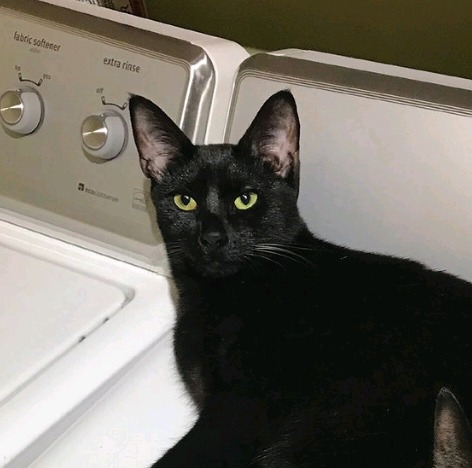
1 note
·
View note